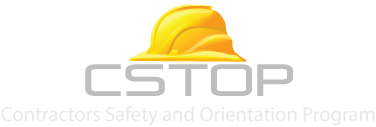HOW CSTOP FULFILLS PSM
WAC 296-67-029 Contractors.
(1) Application. This section applies to contractors performing maintenance or repair, turnaround, major renovation, or specialty work on or adjacent to a covered process. It does not apply to contractors providing incidental services which do not influence process safety, such as janitorial work, food and drink services, laundry, delivery, or other supply services.
(2) Employer (host facility) responsibilities.
(a) The employer, when selecting a contractor, shall obtain and evaluate information regarding the contract employer's safety performance and programs.
(b) The employer shall inform contract employers of the known potential fire, explosion, or toxic release hazards related to the contractor's work and the process. CSTOP does this for the host facility in the Petroleum Module.
EXAMPLE OF A PROCESS FLOW DIAGRAM
(c) The employer shall explain to contract employers the applicable provisions of the emergency action plan required by WAC 296-67-053.
(d) The employer shall develop and implement safe work practices consistent with WAC 296-67-021, to control the entrance, presence, and exit of contract employers and contract employees in covered process areas.
(e) The employer shall periodically evaluate the performance of contract employers in fulfilling their obligations as specified in subsection (3) of this section.
(f) The employer shall maintain a contract employee injury and illness log related to the contractor's work in process areas.
(3) Contract employer responsibilities.
(a) The contract employer shall assure that each contract employee is trained in the work practices necessary to safely perform his/her job. CSTOP does this for the contractor.
(b) The contract employer shall assure that each contract employee is instructed in the known potential fire, explosion, or toxic release hazards related to his/her job and the process, and the applicable provisions of the emergency action plan. CSTOP does this for the contractors in the petroleum module
(c) The contract employer shall document that each contract employee has received and understood the training required by this paragraph. The contract employer shall prepare a record which contains the identity of the contract employee, the date of training, and the means used to verify that the employee understood the training. CSTOP does this for the contractor.
(d) The contract employer shall assure that each contract employee follows the safety rules of the facility including the safe work practices required by WAC 296-67-021.
(e) The contract employer shall advise the employer of any unique hazards presented by the contract employer's work, or of any hazards found by the contract employer's work.
